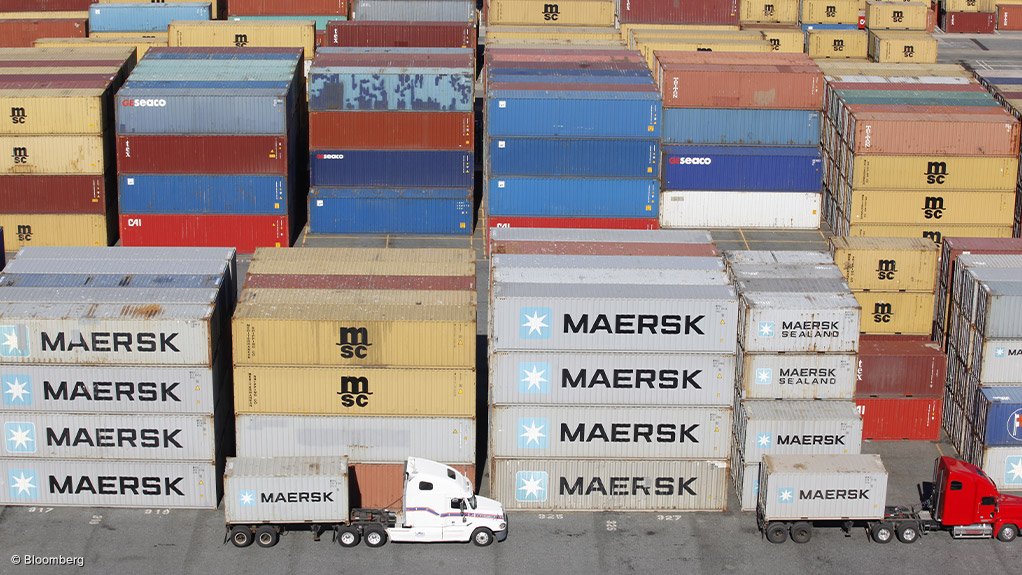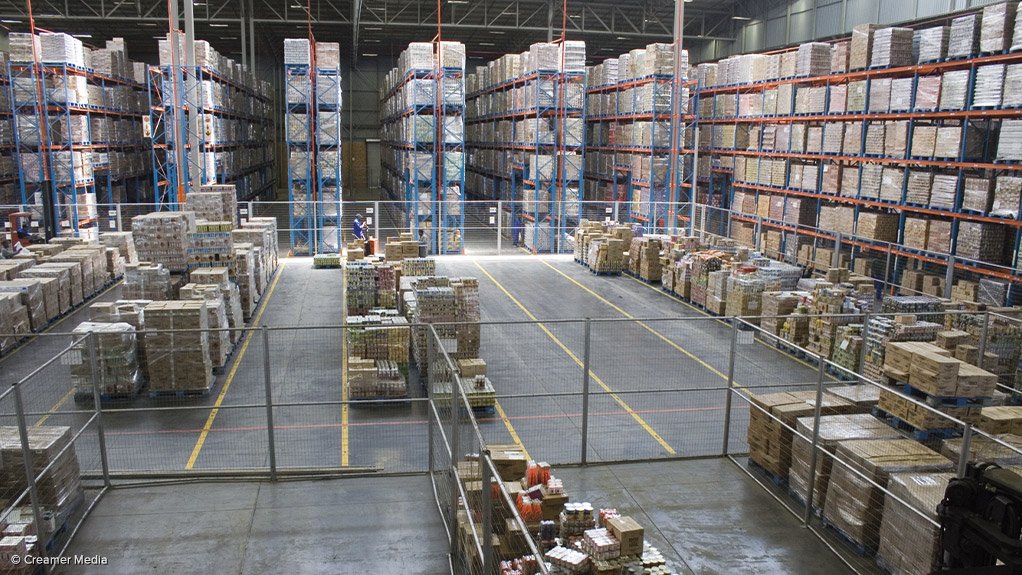How technology is starting to change logistics ecosystems






TRACEABILITY The ability to know where a consignment is and when it will arrive has cost implications for supply chains
Photo by Bloomberg
LOGISTICS PLANNING Better planning and forecasting, as well as predicting delays or disruptions, will be important to improve supply chain-wide efficiencies
FLOW Data is a primary flow along any supply chain
LINE OF SIGHT Various technologies may be used to track supply from source to the consumer and back again through returns or post-use disposal
New technologies being applied to supply chains – helping to digitalise them further – can provide significant intelligence that will improve control and streamline business processes.
This will be grounded in more real-time information and predictions based on analy- tical outputs of the data, which will assist in reducing risks, while allowing for new services and capabilities.
New technologies, such as blockchain, artificial intelligence and predictive analytics, are neither a panacea for supply chains nor will they automatically translate to greater efficiencies or operational benefits, unless they are applied to solve fundamental issues or satisfy new demands placed on logistics systems, says information technology multi- national T-Systems South Africa transport specialist Ronald Salis.
The perennial supply chain challenge of balancing cost, inventory and service is still the primary driver behind the adoption of technology, says Association of Supply Chain Management adviser and supply chain management expert Sean Culey.
However, there is an ever-increasing urgency to adopt these new technologies to become more demand driven, as control of the relationship shifts from the manufacturer and supplier to the customer. Digital technologies have enabled customers to demand greater responsiveness and reliability, regardless of the channel they use.
E-commerce has been specifically disruptive, with customers requiring the flexibility to order goods at their discretion, have them delivered at the location and time of their choosing and return them just as easily.
“Research by Gartner established that two-thirds of online customers check the returns policy before making a purchase – and 30% of what is bought online is returned. Thus, the creation of an always-available, omni- channel demand-capture environment has required the creation of an omnichannel logistics solution,” Culey explains.
Determining the relevance of information for a specific process is a key challenge, and this relates to processing, analysing and making the information available in real time. Moving relevant data to the correct processes timeously is the basis for effectively leveraging predictive analytics, says Salis.
“Companies are looking at a range of integrated systems to know where goods or assets are, what condition they are in and when they will arrive. This data will fit into predictive analytics systems to enable companies to become more efficient by, for example, reducing documentation delays and correcting errors and discrepancies, as well as reconciling invoices before they lead to delays or costs,” he explains.
Companies are using technologies to respond to new demands and needs by better understanding and automating their manufacturing and supply chain operations, subsequently enabling companies to become more personal, local and sustainable, confirms Culey.
“There is no way that this always-on, on-demand business model can be realised with just enterprise resource planning systems and human producers, planners, pickers and packers,” he emphasises.
Purpose Driven
Many portions of logistics chains are highly efficient, honed by years of practice and experience and supported by fit-for-purpose systems.
The benefits of new technologies, therefore, will often address either crosscutting issues, such as information flow and docu- mentation, or new requirements such as responsiveness and pre-empting faults and delays, says Salis.
The potential of intelligent planning systems to eradicate the errors in demand and supply planning is a significant attraction, owing to its ability to create a more flexible and responsive demand signal at a much higher level of accuracy, resulting in lower incidents of stock-outs or excess inventory, confirms Culey.
“Sustainability is rising as a requirement and, while government and legislative pressure remains the primary driver for most companies to adapt processes, many companies are becoming excited about the potential of blockchain and the Internet of Things to track supply from source to the consumer, and then back again through returns or postuse disposal,” he says.
There is a wealth of data available for analytics systems inside and outside organisations. Predictive analytics, integrated with a range of supporting information and operational systems, can also help to highlight what is missing, notes Salis.
“Information flows enable companies to be more aware, sometimes by simply making the information or impact of actions more apparent to operators. However, consistently improving processes requires that the information is not only captured and analysed but also used to make methodical predictions,” he says.
This is where the element of machine learning comes into play, as the historical data of a company can be interrogated beyond only institutional memory of key personnel to investigate incidents and anomalies, adds Salis.
“The context and impact of these events can be used to gain insight and develop predictive models to better manage or mitigate the impacts when they appear and, thereby, improve efficiencies.”
Predictive modelling extends further, as all data and insights are captured and made available, allowing for richer information to be produced and more robust decisions to be taken, Salis explains, noting that digitalisation is by necessity an iterative and progressive process, not a sea change.
Culey summarises that technology makes it possible for the supply chain to become more seamless, responsive, reliable and transparent.
“There is no barrier preventing companies from understanding how their supply chains work, and why issues arise that prevent them from being aligned, responsive, reliable and transparent.”
Some supply chain issues will require technological solutions, but about 80% of them could be resolved through better data management, ownership and integrity; better trust in-house and externally; better collaboration and communication; better standardisation of repetitive processes; and more open-minded and long-term leadership, he says.
“You cannot control what you do not understand, and you cannot improve that which you cannot control. Therefore, a good start is understanding who your customers are, what they value, and what you do that destroys that value. Then figure out how you could minimise these instances with the tools and systems you have.”
In some cases, systems will be the bottle- neck, but, in many other cases, it will be the people, processes, data, misaligned objectives and metrics, poor communication and a poor company culture, and there is nothing preventing companies from working on them right now, says Culey.
Demand-Signal Data
Data is a primary flow along any supply chain and is the lifeblood of any cost- efficiency and -effectiveness measures, says supply chain software company MACMobile commercial director Andrew Dawson.
There are various technologies and sufficient protective measures to allow for clean and comprehensive sharing of data without risk. This facilitates data flow between supply chain partners, as well as their service providers, without exposing intellectual property or sensitive information.
“Bidirectional data sharing is becoming the accepted norm and must happen to provide line of sight to markets and for companies to more effectively identify demand signals and forecast trends. The ultimate goal is to provide a demand-pull prediction model that allows for just-in-time manufacture and/or supply of goods,” says Dawson.
Similarly, MACMobile’s experience working in African supply chains and international supply chains that extend into the continent demonstrates that supply-chain specialists, whether planners or distributors, can play various roles in improving efficiencies.
International supply chain solutions and services company Global Trade Solution MD Louise Wiggett emphasises that efficiency gains from supply chain ecosystem partners can only occur if there is more transparency.
“Better information flow – when my goods were delivered by my buyer to the consoli- dation warehouse, when they were placed onto a vessel and what the customs status of the consignment is – has natural cost and efficiency implications.”
For example, flower farmers in Kenya can share information – as part of a cloud-based blockchain system – about the flowers they picked before the delivery arrives at Mombasa to be flown to the Netherlands. This enables traders to know what flowers are available well before the delivery arrives, and to start bidding and fulfilling orders, she explains.
“This approach has transformed the ecosystem for farmers and flower traders, and improved the value derived from the trade for all parties.”
Blockchain’s primary use will be focused on supply chains where it is important to record the source of the goods and track the goods, such as the food and perishable goods industries, says Culey.
“Also, the more complicated the supply chain, the greater the demand for transparency,” he adds.
“Blockchain is a simple technology, which has various flaws, but we predict that its evolution will provide value for supply chains and will become a feature of supply chains,” says Dawson.
Integrating supply chains remains the biggest challenge, with integration mainly being point to point and between individual companies. The new supply chain models enable multiple parties to be linked to various other parties as part of an ecosystem, says Wiggett.
“The number of blockchain pilot projects in logistics increased from about 20 to 2 800 within a year,” she illustrates.
It is crucial that companies determine their strategies for this future supply chain ecosystem. However, while skill sets will need to be augmented and specialist service providers will face more competition, a supply chain ecosystem will enable small and medium-sized companies to compete directly even against large companies.
“The changes will necessitate new strategies and new business models, but will result in supply chains becoming more transparent, more competitive and more efficient,” she concludes.
Article Enquiry
Email Article
Save Article
Feedback
To advertise email advertising@creamermedia.co.za or click here
Comments
Press Office
Announcements
What's On
Subscribe to improve your user experience...
Option 1 (equivalent of R125 a month):
Receive a weekly copy of Creamer Media's Engineering News & Mining Weekly magazine
(print copy for those in South Africa and e-magazine for those outside of South Africa)
Receive daily email newsletters
Access to full search results
Access archive of magazine back copies
Access to Projects in Progress
Access to ONE Research Report of your choice in PDF format
Option 2 (equivalent of R375 a month):
All benefits from Option 1
PLUS
Access to Creamer Media's Research Channel Africa for ALL Research Reports, in PDF format, on various industrial and mining sectors
including Electricity; Water; Energy Transition; Hydrogen; Roads, Rail and Ports; Coal; Gold; Platinum; Battery Metals; etc.
Already a subscriber?
Forgotten your password?
Receive weekly copy of Creamer Media's Engineering News & Mining Weekly magazine (print copy for those in South Africa and e-magazine for those outside of South Africa)
➕
Recieve daily email newsletters
➕
Access to full search results
➕
Access archive of magazine back copies
➕
Access to Projects in Progress
➕
Access to ONE Research Report of your choice in PDF format
RESEARCH CHANNEL AFRICA
R4500 (equivalent of R375 a month)
SUBSCRIBEAll benefits from Option 1
➕
Access to Creamer Media's Research Channel Africa for ALL Research Reports on various industrial and mining sectors, in PDF format, including on:
Electricity
➕
Water
➕
Energy Transition
➕
Hydrogen
➕
Roads, Rail and Ports
➕
Coal
➕
Gold
➕
Platinum
➕
Battery Metals
➕
etc.
Receive all benefits from Option 1 or Option 2 delivered to numerous people at your company
➕
Multiple User names and Passwords for simultaneous log-ins
➕
Intranet integration access to all in your organisation



















